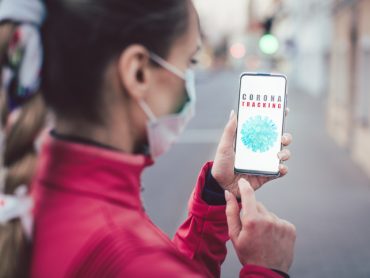Offer Relevancy Represents the Best CDP Application Right Now
(Article originally written by Adam Mogelonsky for Hospitality Net)
We hear the word ‘personalization’ being thrown around a lot of hospitality these days. And rightfully so, as there’s a ton that hotels can and should be doing to enhance the guest experience. What I caution from the start, though, is that this is an arms race; if every hospitality brand is gunning for improved market share or ADR growth by ramping up their personalization, then you can’t rest on your laurels.
Knowing that it’s an arms race means that personalization must be a part of an ongoing process. And what I am seeing from recent developments in the evolution of the hotel technology landscape – and has been emphasized through the latest thought pieces from Revinate – is that the core engine for your brand’s personalization process is the customer data platform (CDP).
While personalization has tremendous potential for augmenting the onsite experience, I instead want to focus on every part of the guest journey leading up to the arrival. After all, what good is onsite personalization without guests to begin with? To distinguish between the onsite and the other phases in the customer journey – in this case, pre-booking or dream, booking and pre-stay or prearrival – we need a new word. For this, I posit we use the term ‘relevancy’.
Relevancy is the context that will induce the guest to convert with the right price at the right time, to purchase a package, to take you up on your upsell offer and set the expectation for a great trip ahead by demonstrating quality KYC (know your customer) well before they arrive on premises via a strong first impression. The strategy here is to capture as much revenue per guest (RevPAG or total revenue, TRevPAR) as possible prior to arrival, which then helps a variety of financial KPIs, in the process smoothing out forecasted labor requirements and maximizing guest satisfaction.
In practice, these contextual or relevant offers that incorporate all manner of ancillaries and stay-independent addons are only possible with a well-mapped ecosystem of real-time data connections that can adapt the content based on what’s known about each guest. Hence, you need a CDP, and it has to be one that’s been purpose-built for hospitality in order to stably manage all the necessary connections and massive pools of data accrued by disparate, siloed systems.
To solidify the point for what you can do to craft more relevant offers using CDP-enabled data connections to drive RevPAG, let’s look at some examples that Revinate has highlighted in its recent educational content.
- Match and merge. Otherwise known as identity resolution or deduplication, the CDP’s underlying programming can amalgamate profiles to then help to upsell OTA bookers or return visitors who only partially filled out their registration information.
- Direct booking incentives. Strategizing around the OTA channel shift to direct is a persistent conversation amongst commercial teams, and a foremost way to go about this is to adapt the website communication around what you know about the guest (IP address, landing page etc.) in order to ramp up conversions.
- Website signup campaigns. Offer and newsletter popups that can remember the webpage where the customer interacted with the signup in order to tailor future messaging or segmentation.
- Cart abandonment incentives. Sending gentle reminder emails to potential customers who have left the booking process midway through, using information from other systems to personalize the messaging or apply a rules-based perk.
- Upselling optimization. By knowing more about an incoming guest in terms of what they’ve bought (package, room type etc.) as well as how they’ve bought (channel, timing etc.), you can better engineer your upselling promotions as well as target them by the guest’s preferred purchasing channel (email versus text) and preferred timing (seven days out from arrival versus two days out).
- Onsite upselling. While not in the prearrival phase, guests can still be marketed to once their on premises, but to do this properly the offers must have accurate context about what’s available on such short notice (eg. spa treatments that aren’t interruptive to a practitioner’s hours) as well as what the guest can logistically fit into their schedules (eg. selling a full-day cultural tour to a conference delegate who may have previously considered a shoulder night during prearrival is now tone deaf).
- Cancellation prevention. Knowing that many guests will book multiple hotels then cancel all but one only a few days out from arrival, you can now use machine learning tools based on data compiled by the CDP to identify possible cancellations then target them with a kind note or even a reservation incentive.
- Dining preferences. I distinguish food and beverage preferences here because this is something that’s universal for all guests – some spa, others golf, but everyone eats – and is deeply personal in terms of habits and emotional impact, whereupon making a strong connection here through high relevancy as derived by a CDP interpretation of POS data can go a long way to wowing customers (F&B packages, welcome amenities, vouchers etc.).
- Brand-wide preferences. As a CDP can bring together information from multiple properties using different PMSs or other core systems, it can then be used to inform offers or room assignments for when a guest stays at another hotel in the brand, therein acting as a loyalty tool, as well as potentially make recommendations on where a guest should travel next.
- Advanced segmentation. By remembering preferences right from the start of an interaction prior to arrival – but also factoring in past visits and sentiment analysis – hoteliers can now make highly informed decisions about how to filter their customers for any upcoming promotions, VIP offers or events (eg. giving a ‘first look’ or exclusive access pass to a wine-themed event to only those past guests who are identified as oenophiles based on dining purchase history).
Ultimately, there’s a ton that can be done in terms of offer relevancy that will lead to increased revenues and further service personalization down the road. To close, know that of these possibilities there is no silver bullet. Instead, you test and retest from the above to realize incremental improvements.




